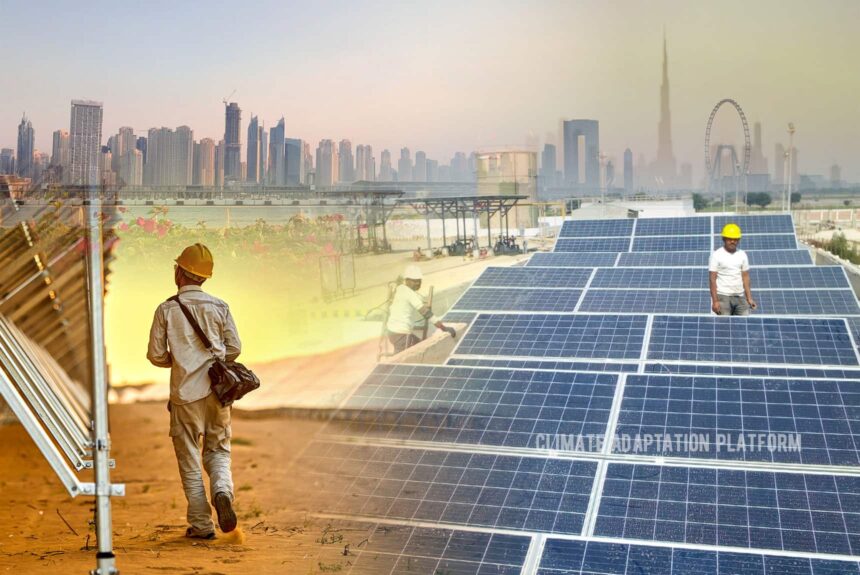Climate change is warming the world, and cities are the places that warm fastest. This summer, countries in Europe and the United States experienced a historic and deadly heatwave resulting in many heat-related fatalities as urban areas adjusted to the new normal catalyzed by the changing climate (Capucci & Somenow, 2022).
As cities cope with the increasing temperature exacerbated by the urban heat island effect, it will also raise the demand for air conditioning. According to the International Energy Agency, the energy increased due to air conditioning use and will increase three times by 2050 (Airconditioning use, 2018).
But a rise in air conditioning usage will only exacerbate the problem of releasing harmful refrigerants into the atmosphere.
The Middle East and North Africa (MENA) region is also one of the hotspots for climate change. Aside from rising temperatures contributing to more persistent and lengthy droughts, the area also suffers from water scarcity.
The region held its first Middle East and North Africa Climate Week in Dubai from 28 to 31 March 2022. The event “aims to accelerate collaboration and integrate climate action into global pandemic recovery. Building forward opens an opportunity to address social inequalities and invest in economic development that is good for humanity and nature.”
And “provides a platform for governments, cities, private sector leaders, financial institutions and civil society to discuss opportunities to build forward from the pandemic by identifying opportunities to enhance climate action. The event brought together key stakeholders to take the pulse of climate action in the region, explore climate challenges and opportunities and showcase ambitious solutions”.
Building climate resilience in the region is the event’s highlight and brought forward climate action projects from the areas that would mitigate the worst climate change effects.
The United Nations Climate Change article features five climate actions in the region that has made a difference in the community – from empowering women to find solutions to climate change to training women to install solar panels and applying fog harvesting to provide an alternative and sustainable water source to combat desertification, supplying solar energy to address Gaza’s energy crisis, transforming police operations in Dubai to make it more climate-friendly, and revising gender stigma in Syria through eco-friendly transportation mode.
Learn more about these climate action projects in MENA by clicking the link in the “Sources” list below.
Sources:
Capucci, M. & Somenow, J. (2022 18 July). These maps show how excessively hot it is in Europe and the U.S. The Washington Post. Retrieved from https://www.washingtonpost.com/climate-environment/2022/07/18/heatwave-europe-unitedstates-records-uk/
Airconditioning use emerges as one of the key drivers of global electricity-demand growth. (2018, 15 May). IEA. Retrieved from https://www.iea.org/news/air-conditioning-use-emerges-as-one-of-the-key-drivers-of-global-electricity-demand-growth
5 Middle East and North Africa Climate Projects we Love. (2022 25 March). UNFCC. Retrieved from https://unfccc.int/blog/5-middle-east-and-north-africa-climate-projects-we-love
Middle East and North Africa Climate Week 2022. UNCC. Retrieved from https://unfccc.int/MENA-CW2022



Leave a Reply